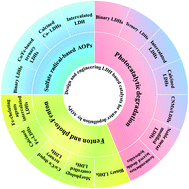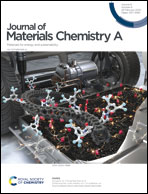Design and engineering of layered double hydroxide based catalysts for water depollution by advanced oxidation processes: a review
Abstract
Advanced oxidation processes (AOPs) have attracted special attention owing to the high removal efficiency of recalcitrant organic contaminants. Recently, the use of layered double hydroxides (LDHs) or LDH composites as catalysts for AOPs (photocatalysis, Fenton reaction methods, and sulfate radical (SO4˙−)-mediated oxidations) has received increasing attention and has become a new research hotspot. This is due to their layered structure, flexible tunability, electronic properties, and high physicochemical stability. Herein, we provide a comprehensive review on the development and progress in the synthesis of pristine LDH and modified LDH catalysts for AOPs. Special attention has been paid to the design strategies of high-performance LDHs, including (1) rational design of pristine LDHs, such as binary and ternary LDHs, (2) calcination of LDHs at an appropriate temperature, (3) modification of LDHs with a semiconductor or metal as a cocatalyst, (4) changing the compensating anions, and (5) controlling the LDH morphology. Finally, some valuable perspectives on the challenges and future research directions in LDH-based AOPs are discussed.

- This article is part of the themed collection: Journal of Materials Chemistry A Lunar New Year collection 2021


 Please wait while we load your content...
Please wait while we load your content...